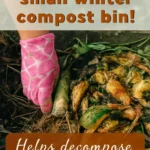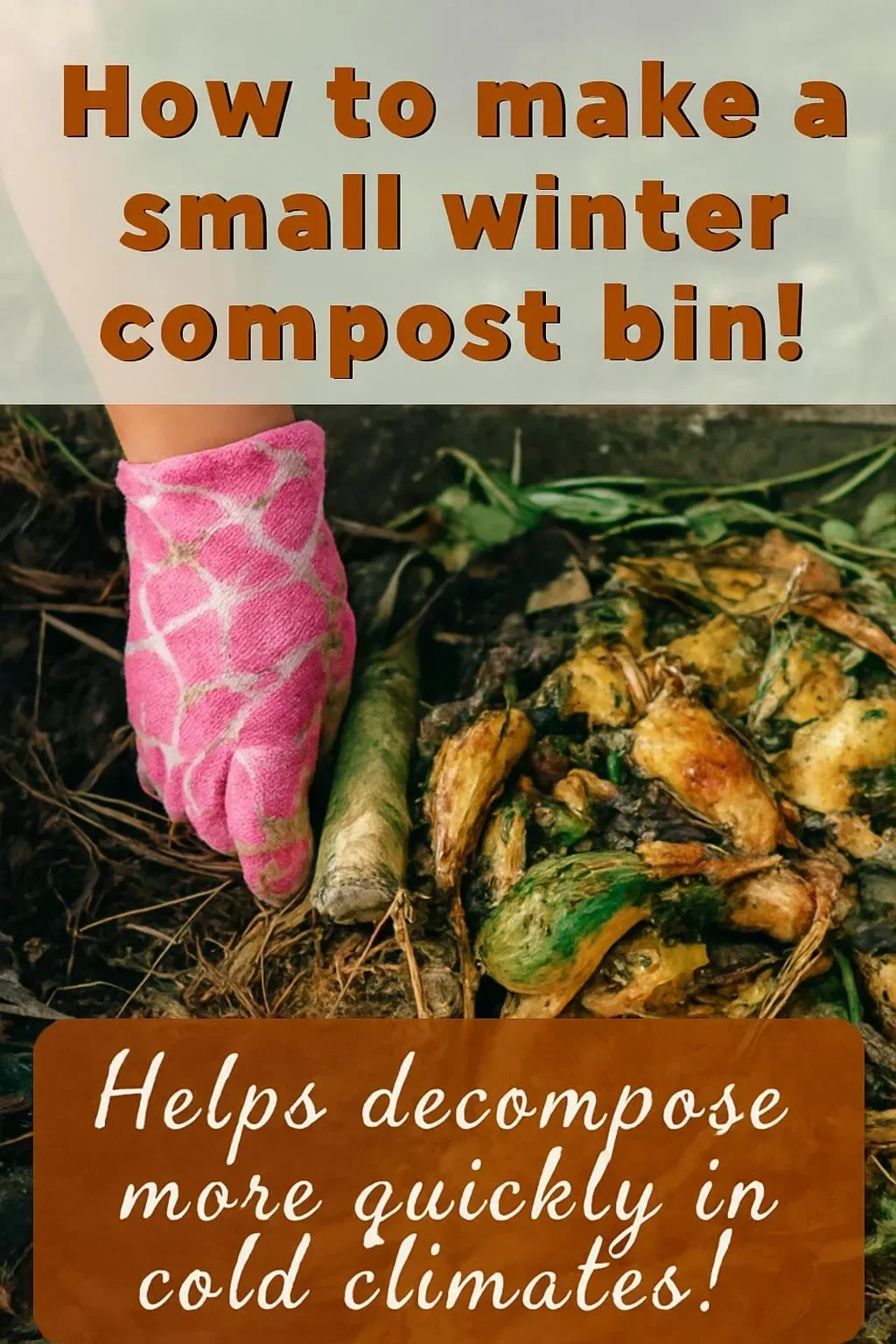Winter Composting Made Easy
Composting during the winter months might seem challenging, but it can be a rewarding activity that benefits both your garden and the environment. Creating a small winter compost bin is a practical solution to manage kitchen scraps and yard waste, even in colder weather. Having spent years nurturing a green thumb, I find that winter composting not only helps reduce waste but also keeps your garden thriving come spring.
Why Make This Recipe
- Eco-Friendly: Composting reduces landfill waste and enriches the soil, creating a healthier environment.
- Cost-Effective: By composting, you can cut down on the need for store-bought fertilizers, saving you money in the long run.
- Nutrient-Rich Soil: Compost provides essential nutrients for plants, promoting healthier growth and vibrant blooms.
- Convenience: Having a small compost bin means you can easily manage organic waste without requiring a lot of space.
- Personal Connection to Nature: I love observing how different materials break down and transform into rich compost through the winter. It’s a tangible experience that keeps me connected to the cycle of life.
Recipe Overview
- Prep time: 15 minutes
- Cook time: N/A (composting process varies)
- Total time: Ongoing
- Servings: N/A (depends on usage)
- Difficulty level: Easy
- Cooking method: Anaerobic decomposition in a controlled bin
My Experience Making This Recipe
I started my winter compost bin years ago, navigating the nuances of maintaining compost in lower temperatures. I initially struggled with keeping the compost heated enough since decomposition can slow down significantly in the cold. However, I discovered that layering materials effectively and occasionally turning the pile can encourage microbes to keep the process moving.
How to Make a Small Winter Compost Bin
To make a small winter compost bin, you’ll need a suitable container—something like a plastic bin or a wooden box with medium-sized holes for aeration works well. Start by layering browns (like dry leaves and cardboard) with greens (such as fruit scraps and vegetable peels). Ensuring a balanced ratio—ideally, about three parts browns to one part green—will help kickstart the decomposition. Throughout the winter, turn the compost weekly to mix the materials and maintain airflow, promoting quicker breakdown.
Expert Tips for Success
- Choose the Right Container: Use a bin with a lid to retain heat, which is essential for decomposition during winter.
- Insulate Your Bin: Wrap the bin in old blankets or straw bales to retain warmth and moisture, which are crucial during cold months.
- Monitor the Moisture: The compost should be damp but not soggy. If it gets too wet, add dry materials, and if it’s too dry, spray with water.
- Chop Up Materials: Smaller pieces decompose faster. Cut kitchen scraps into smaller sizes before adding them to the bin.
- Maintain Airflow: Regularly turning the compost mix helps introduce oxygen, speeding up the decomposition process.
How to Serve Winter Compost
Your compost may not be served like a traditional dish, but it plays a crucial role in nourishing plants. You can use it in your vegetable garden, flower beds, or potted plants. For presenting your compost mix, consider layering it into your garden beds alongside spring planting or mixing with soil in pots for a beautiful green display.
Storage and Reheating Guide
Since you’re not cooking with this compost, it doesn’t require traditional storage methods. However, for optimal results:
- Keep the compost bin in a sheltered location to avoid heavy snow or rain.
- Ensure it remains covered to prevent excess water loss during thawing.
- If not using all compost immediately, store it in a breathable container or spread it out in garden beds when ready.
Recipe Variations
- Compost Tumbler: If space allows, consider using a compost tumbler for easier mixing and faster breakdown.
- Bokashi Method: Try the Bokashi method for fermenting kitchen waste, which can be added to your compost bin for a nutritional boost.
- Reduced Materials: For smaller households, limit greens like fruit scraps to pickled items that will break down and add flavor.
- Specific Ratios: Tweak the carbon-nitrogen ratio based on what scraps you have available for more tailored production.
Nutritional Highlights
Using compost significantly enriches the soil and supports healthier produce. Key benefits include:
- Improved Soil Structure: Helps retain moisture and nutrients.
- Organic Options: Nutrients from compost contribute to the growing organic gardening trends.
- Allergen Information: Composting typically involves kitchen scraps, but always avoid adding meat and dairy, which can attract pests.
Troubleshooting Common Issues
- Too Much Moisture: If the compost is soggy, add dry materials like shredded paper or dry leaves.
- Bad Odors: If foul smells occur, this may indicate too many greens or insufficient aeration. Balance by adding browns and turning the pile.
- Slow Decomposition: If the compost is breaking down slowly, consider cutting materials into smaller pieces and turning the pile more frequently.
Frequently Asked Questions
-
Can I compost in the winter?
Yes, winter composting is possible. The process slows down, but it can still occur. Insulating your bin helps maintain microbial activity. -
What materials can I compost?
You can add kitchen scraps (vegetable peels, coffee grounds) and yard waste (leaves, small twigs). Avoid meat, dairy, and oily foods to prevent pests. -
How do I know my compost is ready?
Compost is ready when it is dark, crumbly, and smells earthy. It should no longer resemble the original materials. -
Do I need to add anything special for winter composting?
Insulation methods, like wrapping the compost bin with blankets or straw, and maintaining a balanced carbon-to-nitrogen ratio will help keep your compost active during winter.

Winter Composting Made Easy
- Total Time: Ongoing
- Yield: N/A
- Diet: Vegan
Description
Learn how to easily manage your kitchen scraps and yard waste during winter months with a simple composting method that benefits your garden and the environment.
Ingredients
- Dry leaves
- Cardboard
- Fruit scraps
- Vegetable peels
- Organic materials (avoid meat and dairy)
Instructions
- Choose a suitable container like a plastic bin or wooden box with aeration holes.
- Layer browns (dry leaves, cardboard) with greens (fruit scraps, vegetable peels) in a 3:1 ratio.
- Turn the compost weekly to maintain airflow.
- Insulate the bin with blankets or straw bales.
- Monitor moisture levels—keep damp but not soggy.
Notes
Regularly check the temperature of the compost and adjust moisture as needed. Smaller chopped materials break down faster.
- Prep Time: 15 minutes
- Cook Time: N/A
- Category: Composting
- Method: Anaerobic decomposition
- Cuisine: N/A

